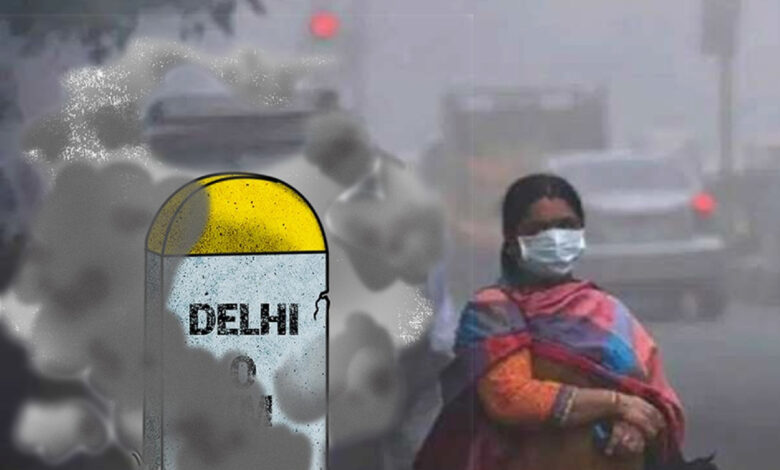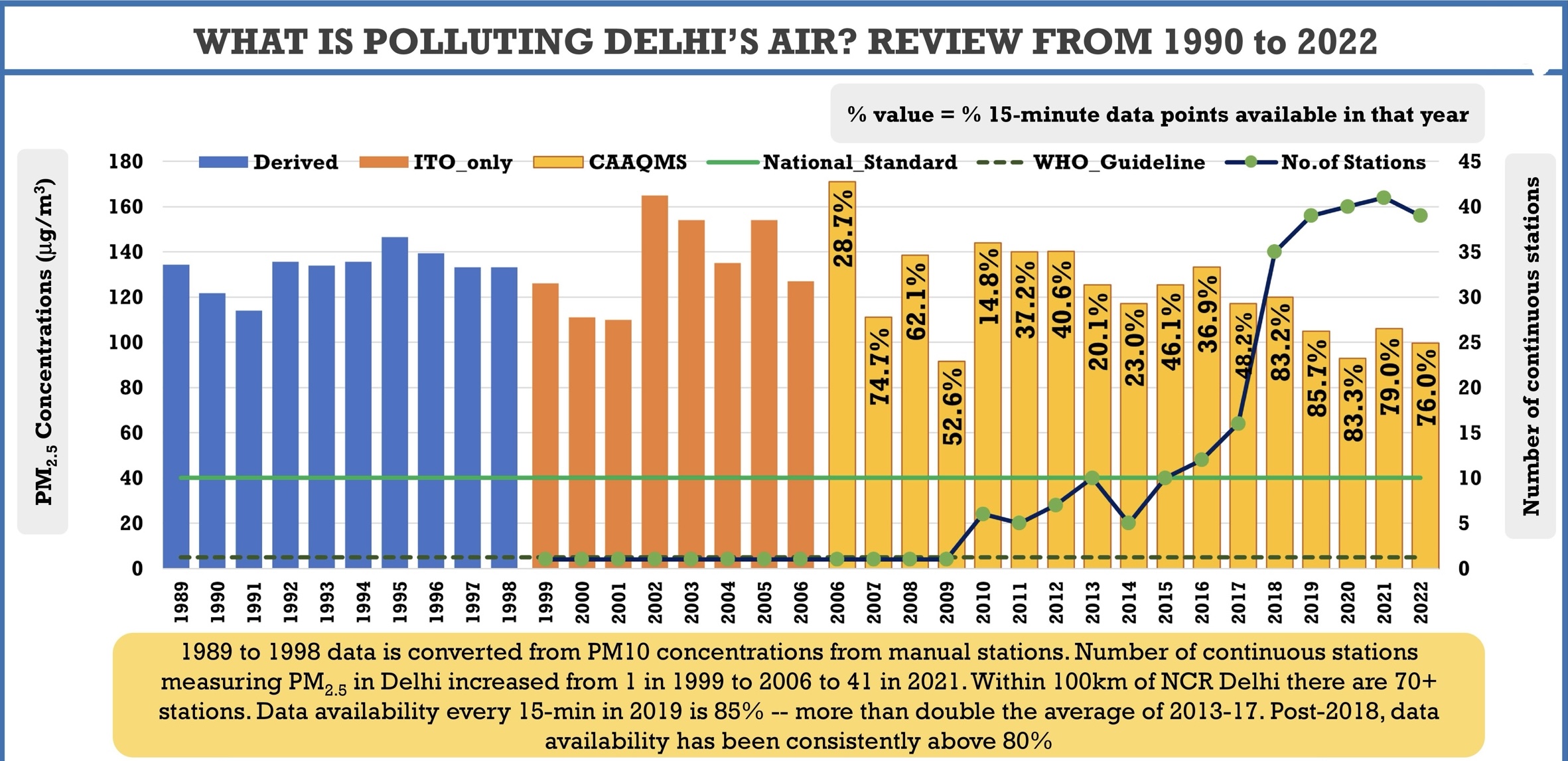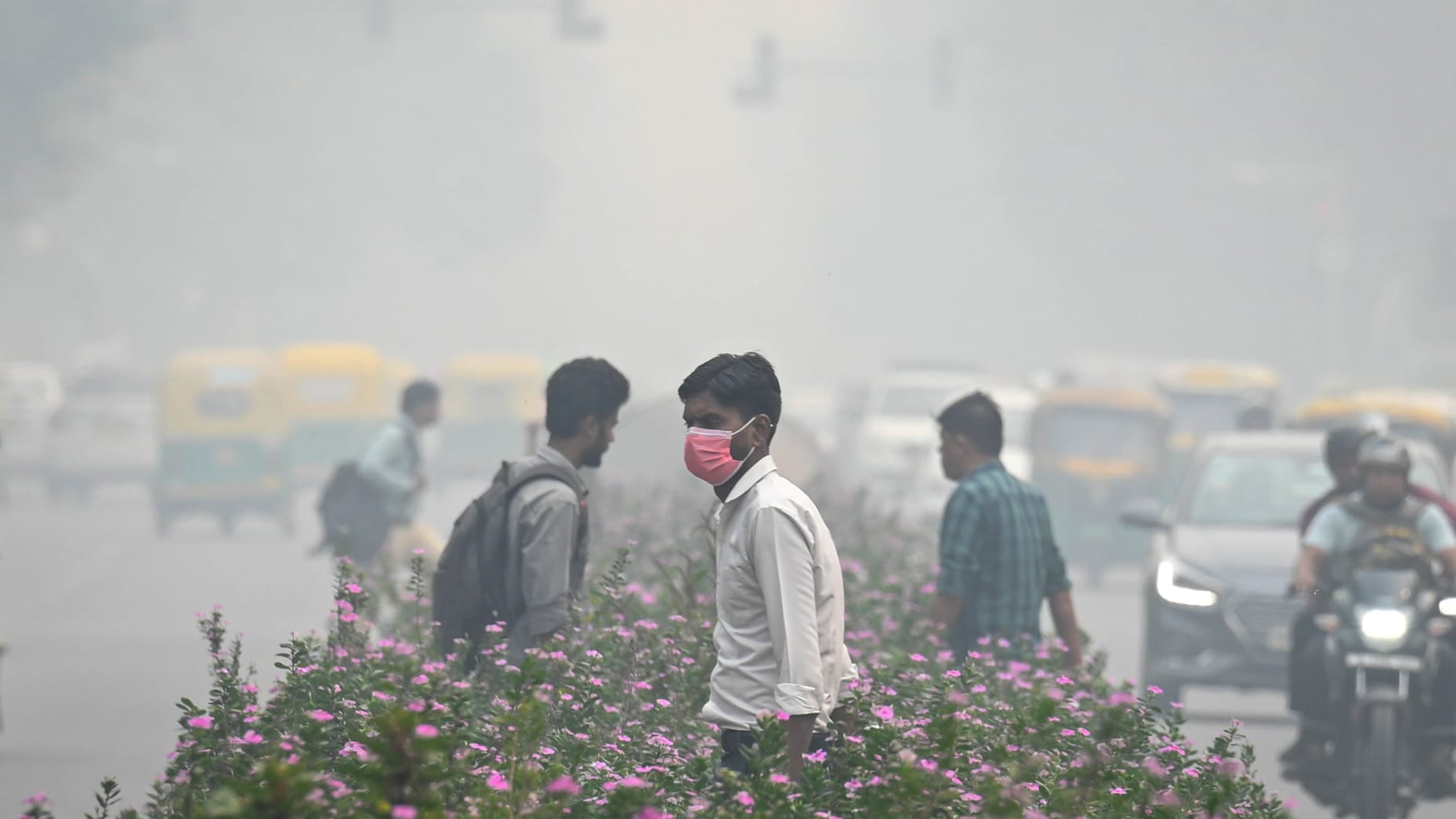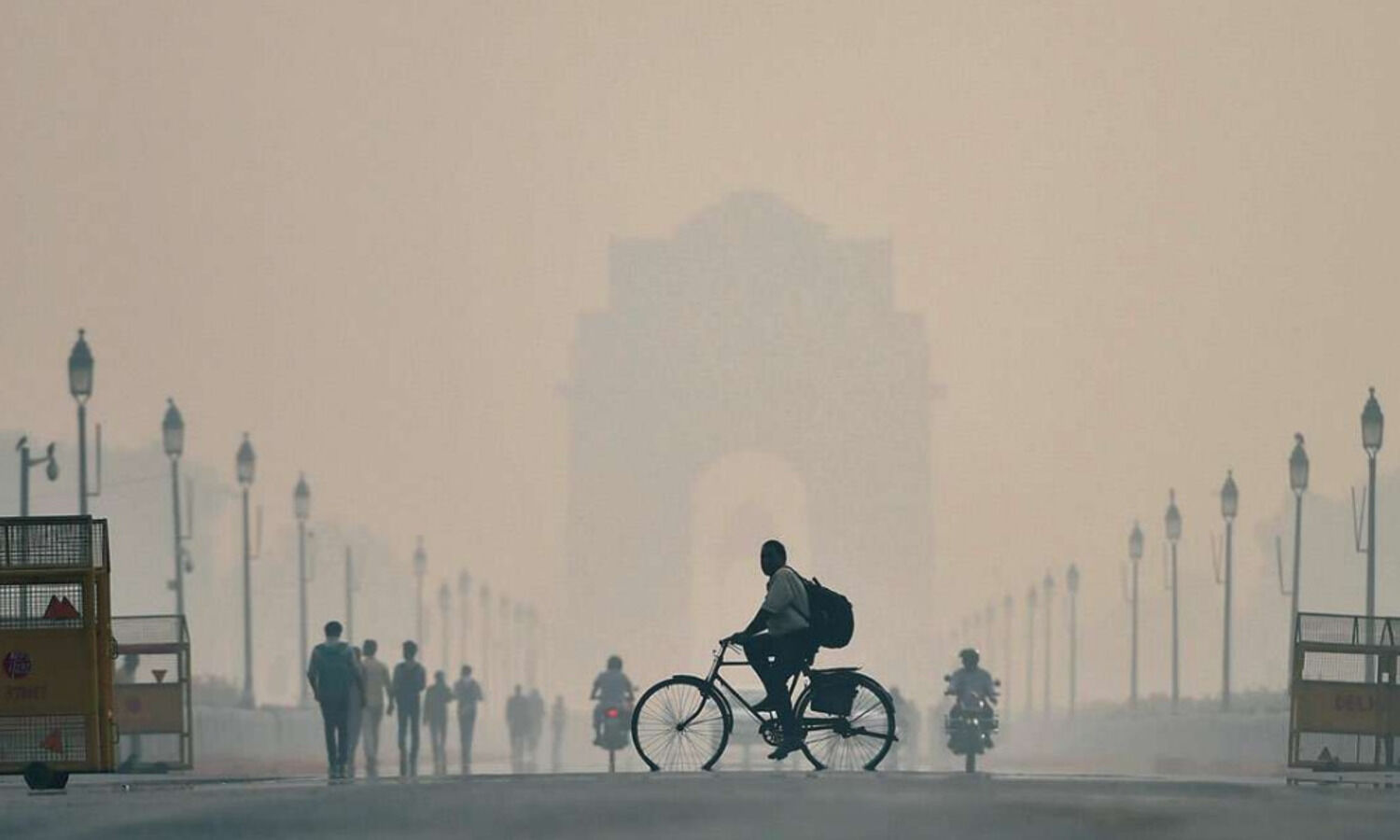Is Breathing in Delhi a Death Sentence? How Much Worse Can It Get?
Delhi, the capital of India, is known for its rich history, diverse culture, and vibrant energy. However, in recent years, it has become infamous for severe air pollution. The air quality is so poor that it significantly impacts the life expectancy of its residents. According to the 2024 Air Quality Life Index (AQLI) by the Energy Policy Institute at the University of Chicago (EPIC), Delhi’s inhabitants could lose nearly 12 years of life due to dangerous pollution levels.

Delhi is the capital of India, fastened to its historical supremacy, varied culture, and pulsating atmosphere. However, it has gained popularity for something very different from pleasant: rampant air pollution for the last few years. The air quality is so bad in Delhi that it affects the life expectancy of the city’s inhabitants.
According to a recent report by the Air Quality Life Index – AQLI 2024, published by the Energy Policy Institute at the University of Chicago – EPIC, residents living in Delhi are set to lose almost 12 years of their lives due to hazardous levels of air pollution.
AQLI Report Findings
The AQLI 2024 report reveals a grim scenario regarding air quality in Delhi. As per the reports, the identification of the following has been made possible:
-
- Inhabitants of Delhi stand to lose an average life expectancy of 11.9 years if air quality breaches the WHO guidelines for PM2.5.
- Even against India’s national standard for air quality, which is less stringent than WHO guidelines, the loss in life expectancy remains high at 8.5 years.
- During 2022, Delhi experienced an average concentration of PM2.5 at 84.3 micrograms per cubic metre (µg/m³), over twice the national standard of 40 µg/m³ and more than 16 times higher than the WHO guideline of 5 µg/m³.
What is PM2.5, and why is it so dangerous?
PM2.5 refers to fine particles less than 2.5 micrometres in diameter. To put this into perspective, these particles are about 30 times smaller than the width of a human hair. Due to their small size they can easily be inhaled into the lungs deep inside and even enter the bloodstream. Consequently, it may trigger all kinds of health problems, including:
- Chronic exposure to PM2.5 heightens their susceptibility to developing diseases like asthma, bronchitis, and other chronic respiratory ailments.
- Exposure to PM2.5 makes individuals sensitive to heart attacks, strokes, and other cardiovascular complications.
- This pollutant may lead to continuous exposure to high levels of PM2.5, especially the deaths of people with the highest risk of experiencing adverse health effects.
The AQLI report estimates that if India meets its national PM2.5 standards, Delhi residents could see an increase in life expectancy by 8.5 years. If the country can achieve the more rigorous PM2.5 guidelines formulated by the WHO, the average life expectancy in Delhi could go up as high as 12 years.
Sources of Pollution in Delhi

Various sources are responsible for air pollution in Delhi. There are many vehicles on the roads of Delhi; for instance, over 1.22 crore registered vehicles run in Delhi as of March 2021. Because of COVID-19, people started depending more on their private vehicles and tried to avoid public transport for health safety.
Therefore, the increased addiction to private vehicles is causing an unprecedented rise in vehicular emissions, which is one of the city’s prime causes of air pollution.
Several small-scale industries based in Delhi account for a part of its economy. However, most of these industries do not adhere to proper pollution control measures, leading to harmful air emissions. Lack of enforcement further aggravates the problem.
Construction Dust
This has led to constant construction going on in the city. These construction activities produce enormous amounts of dust, which further contributes to the levels of PM2.5 in the air. Although the law mandates that construction sites minimise dust production, it remains a chronic issue because of lax enforcement.
Waste burning is also one of the most common practices in large parts of Delhi, where garbage, leaves, and other organic materials are sent up in smoke, emitting harmful chemicals into space. Waste-burning smoke has high levels of PM2.5, thereby contributing to the toxicity in the air.
Stubble Burning
Farmers commonly burn stubble in neighbouring states like Punjab and Haryana before sowing the next crop during the harvest season. Burning crop residue or stubble increases ground-level particulates, known as PM2.5, to extreme levels in the air. The smoke from these fires drifts into Delhi, which records a seasonal spike in air pollution levels, especially during winter.
Weather and Geography Play Their Part
The geography of Delhi and the meteorological cycles also make the capital particularly prone to pollution. During winter, the city experiences a temperature inversion in which a layer of warm air traps the cooler air, along with pollutants, close to the ground. Usually, the air close to the ground is warmer than above, thus allowing pollutants to rise and disperse themselves. This, in turn, significantly increases pollution levels, particularly during winter.
In winter, the wind speed is low, so the pollutants are not scattered but remain concentrated in the city’s atmosphere, thereby deteriorating its air quality. A combination of geographical and meteorological factors restricts pollution dispersion and creates prolonged hazardous air quality periods.
Delhi Health Crisis
The health implications are severe, as is living under such polluted conditions. According to the AQLI report, air pollution alone accounts for a huge number of untimely deaths in India. Around 2.4 million people are estimated to die every year in India because of diseases emanating from air pollution. Shockingly, one in three pollution-related deaths globally occurs in India. This means every Indian’s life expectancy is reduced by an average of 17 years due to pollution.
Economic Impact of Air Pollution
The effects of air pollution go beyond public health to engender significant economic consequences. Air pollution is often considered a “silent economic burden” due to its implications for the productivity and well-being of the workforce.
The growing prominence of diseases emanating from polluted conditions is increasing the cost of healthcare for an individual and the government alike. It further burdens the healthcare system and makes resources that could be used for other essential needs unavailable.
Bad air quality may lead to increased absence from work due to illness. It also may hamper the overall productivity of the workers since, due to various respiratory and other health problems, people may not be able to work efficiently and sincerely.
Because Delhi is one of the most polluted cities in the world, it would discourage tourists from entering the city. This negatively impacts the tourism industry, one of the significant revenue streams in the town. Due to bad air quality, residents must use air cleaners and air conditioners to keep indoor air quality decent. This increases energy consumption, lots of which are generated from coal, further adding to the pollution.
Whose Fault is it?

Blame is passed around between various levels of government and stakeholders regarding Delhi’s air pollution. This is usually thrown from the Delhi state government onto the central government, and vice-versa, while farmers are often blamed for burning crop residue or stubble. But it is true that at every level, all parties share some of the blame for Delhi’s air pollution crisis.
Neither the central nor the state governments could implement the proper pollution control policies. Efforts have been made repeatedly, yet a lack of coordination and political will has often hampered these. Many of the industries in Delhi are not severe about pollution control. They frequently disregard regulations and operate in such ways that add to the pollution levels in the city.
Yet, much reliance on private vehicles and rampant trash burning significantly contributes to pollution. Most residents lack practices that minimise pollution, such as caring for their private cars or proper waste management.
While stubble burning remains the prime contributor to Delhi’s seasonal peak pollution levels, an understanding of the pressures the farmers face is fundamental. For instance, the Preservation of Subsoil Water Act 2009 in Punjab and Haryana restricts planting certain crops at any given time; hence, the farmers, in turn, have minimal time before the next planting season begins to clear the fields. This is how the large-scale use of stubble burning has come into place.
Solutions to Delhi’s Pollution Crisis
The Delhi air pollution crisis needs a multi-dimensional, integrated approach to fix it. Public transportation improvement is one of the most efficient ways to reduce vehicular emissions.
Delhi has a fully functional metro system, but there is still a dire need to expand and improve other public transport systems like buses. This can also be done by promoting public transportation and reducing the number of private on-road vehicles, thereby reducing pollution in the atmosphere.
The promotion of electric vehicles is one of the significant steps that can be taken to reduce vehicle-based emissions as much as possible. The government may offer incentives for their purchase and build needed infrastructures to support these vehicles, including installing charging stations. This would decrease the dependency on fossil-fuel-based vehicles, one of Delhi’s leading pollution causes.

The government must impose strict pollution controls on the industries in Delhi. This will include the use of appropriate pollution control technology and adherence to environmental laws by these industries. Any penalties for their non-compliance must be carried out without any exceptions to prevent industries from causing pollution.
The construction activities are regulated, and the imposition of dust control measures will help lower the amount of PM2.5 in the air. This may be done by covering loose soil in the building areas, minimising dust with water sprays, and installing barriers to contain dust within a site.
Waste management properly will reduce air pollution. The government should take necessary measures to avoid the open burning of waste and promote composting and recycling. Public awareness through campaigns will help educate the residents on proper waste disposal.
The problem of stubble burning will be tackled only when the government proposes viable alternatives to the farmers. In this case, it may be subsidies on machines facilitating the clearing of the fields without burning the stubble or financial incentives for adopting sustainable farming. The solution to this problem must be sought through cooperation among the central and state governments and farmers.
Expanding the city’s green areas would be a further step in making the air cleaner. Trees and plants absorb pollutants and emit oxygen, which minimises the effects of pollution to a minimum. The development and upkeep of parks and green areas in all parts of the city should be among the government’s top priorities.
Time for Action
The air pollution crisis in Delhi has become a complicated problem at many levels, and immediate action needs to be taken. Every finding of the AQLI 2024 report shows the alarming impact that air pollution is causing on the health and life expectancy of Delhi’s residents in general.
That is as grave as it has been but not irreversible. The government, industries, and the public must be able to make combined efforts to lower pollution and raise the quality of life in Delhi. This, however, would call for changed priorities, political will, and an oath for sustainability.




